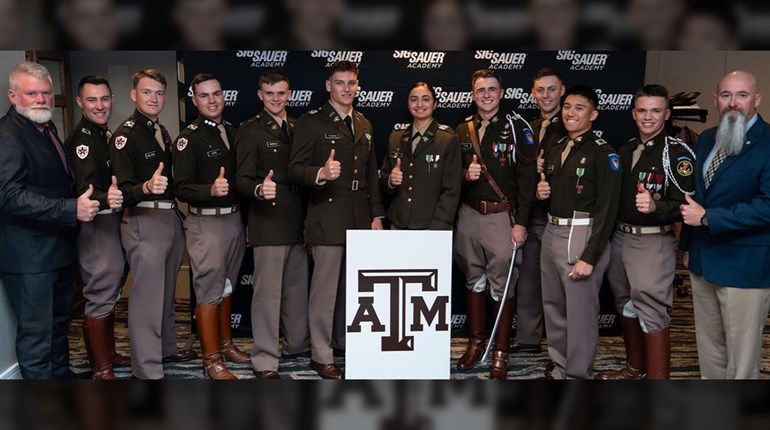
When SIG Sauer entered the ammunition business a few years back, shooters didn’t know what to expect. I’m sure many figured SIG would only offer loads complementing its handgun and tactical rifle lines. Initially that was the case, but before long SIG was providing hunters with ammunition, too. In the beginning SIG designated its hunting loads “HT” but is moving away from that abbreviation. The company now calls the line Elite Hunting ammunition and offers two varieties: Copper Game, and Varmint and Predator.

I’ve shot a lot of ammunition from SIG Sauer and have yet to be disappointed. That’s one of the reasons I considered the Elite Hunting ammo for a special application: a safari during the summer of 2018. While in Africa, my son and I would be testing the new Mossberg MVP Precision Rifle in 6.5 Creedmoor. Prior to the trip, we tried several big-game loads, including the 120-grain Copper Game offering. We found it delivered precision on par with, or better than, the other loads we tested. Two boxes went with us to the other side of the big pond.
Day one of any safari includes—or should include—range time spent checking rifles and sights. After we confirmed the Mossberg was zeroed at 100 yards, we verified our dope out to 500 yards. Our outfitter was prepared and had 8-inch steel plates set up at every 100-yard mark out to that distance. Consistently ringing those plates was not a problem.
My son had planned to spend a lot of time putting his long-range shooting skills to the test. But as with just about any safari, things never go exactly as planned. He became distracted filming buffalo hunts and was able to take only two animals with the Copper Game ammunition. The first was a blesbok he shot for camp meat. The range was 438 yards, and the wind pushed the bullet farther than expected; it hit the blesbok in the center of its body. Fortunately, the bullet created enough tissue destruction to put down the animal quickly as it passed through the body and exited.

The second species was a warthog at about 120 yards. Also taken for camp meat, it dropped on the spot from another pass-through shot that struck on the point of the shoulder. The necropsies revealed internal damage similar to what can be expected from wide-expanding, all-copper bullets of this genre, like the Barnes TSX and Hornady GMX.
Professional hunter Geoffrey Wayland, who sees more big-game animals shot in a single year than an entire camp full of deer hunters will in a lifetime, was impressed. “This is the kind of ammunition I like to see hunters bring to Africa,” he said. “Too often they’ll skimp. Accurate ammunition that delivers good terminal performance gives hunters more options when it’s time to take the shot.”
The Copper Game ammo—which includes 60-grain .223 Rem., 120-grain 6.5 Creedmoor, 120-grain .300 AAC Blackout (supersonic), 150-grain .308 Win. and 165-grain .300 Win. Mag. loads—uses all-copper bullets. SIG claims these bullets will expand to 1.8 times their original diameter while retaining 100 percent of their weight. We failed to recover any bullets, but the 6.5 Creedmoor load generated 2808 fps, differing from the advertised velocity by less than 1 percent. Just as important, the standard velocity deviation was a scant 9 fps for 10 shots, which obviously helped the rifle maintain precision at distance.
All the Copper Game loads utilize nickel-plated cases, which indicates SIG understands what hunters need. Time spent in the field exposes ammunition to the elements, and common brass cases can corrode over the years or even a season. This can impact the ammunition’s ability to feed, function and cycle in a rifle’s action. Let’s face it, some hunters live out of the same box of ammo for several seasons. Nickel plating keeps the cases in good shape during extended use.

Pleased with how the 6.5 Creedmoor load performed, I later tested the .308 Win. offering. It has an advertised muzzle velocity of 2900 fps from a 24-inch barrel. It didn’t quite reach that from my test rifle, but it should exceed 2700 fps from even carbine-length barrels. This is something few factory 150-grain .308 Win. loads will do. I fired it from two compact rifles, and it surpassed that benchmark. As Jeff Cooper often observed, that’s equivalent to the ballistics Theodore Roosevelt and Stuart Edward White relied upon from their .30-06 rifles—with great success I should add—while hunting in Africa more than a century ago.
SIG Sauer’s other hunting loads are for smaller game. The Varmint and Predator line consists of 40-grain .223 Rem. and .22-250 Rem., and 55-grain .243 Win. offerings. Loaded with the same single-base extruded powders as the company’s Match Grade ammunition line, the Varmint and Predator rounds use a copper-jacketed bullet with a yellow polymer tip. Like with similar polymer-tipped varmint bullets, the tip enhances ballistic coefficients and helps initiate rapid expansion. The light-for-caliber bullets result in high velocities, which also promote devastating expansion on smaller, thin-skinned critters.
SIG Sauer has a legacy of offering top-shelf products, regardless of type. It appears the company will continue that heritage with hunting ammunition. The line is worthy of its Elite label, and I expect it will soon grow to include other popular cartridges.

Technical Specifications
• Caliber: .223 Rem., 6.5 Creedmoor, .308 Win. (all tested)
• Bullet: monolithic-copper Copper Game; polymer-tipped, copper-jacketed Varmint and Predator
• Ballistic Coefficient: .240 (.223 Rem. Copper Game), .196 (.223 Rem. Varmint and Predator), .380 (6.5 Creedmoor), .400 (.308 Win.)
• Muzzle Velocity (advertised fps): 3100 (.223 Rem. Copper Game), 3650 (.223 Rem. Varmint and Predator), 2825 (6.5 Creedmoor), 2900 (.308 Win.)
• Muzzle Energy (advertised ft.-lbs.): 1,280 (.223 Rem. Copper Game), 1,183 (.223 Rem. Varmint and Predator), 2,126 (6.5 Creedmoor), 2,801 (.308 Win.)
• MSRP: $20.95-$44.95 per 20-rnd. box; sigsauer.com



































